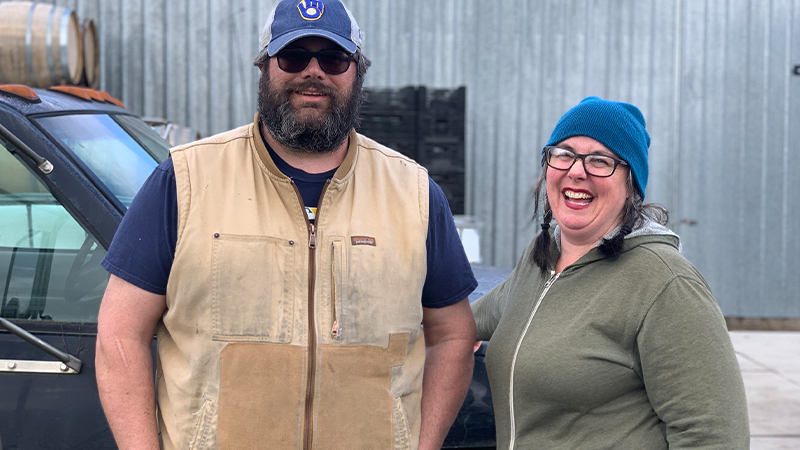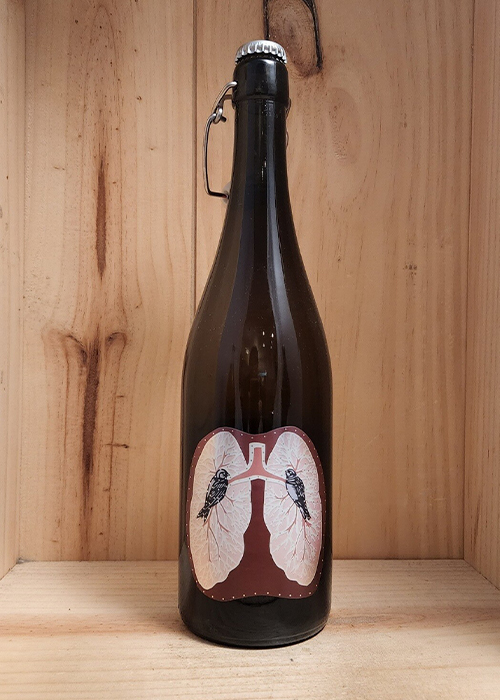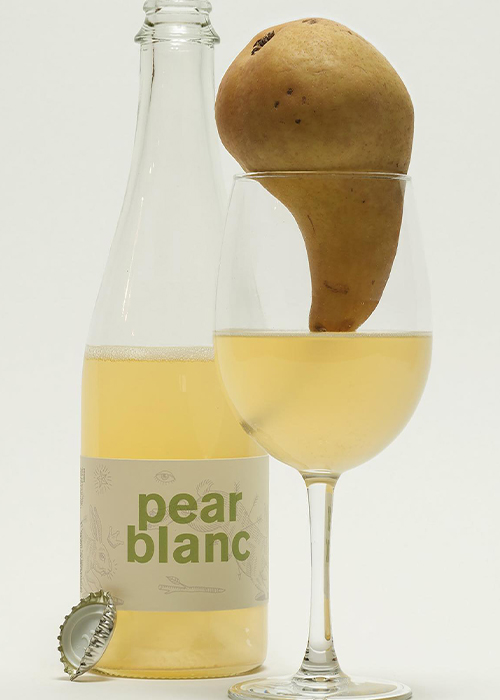When most of us think about fine wine, we think about what you get when you grow, harvest, crush, ferment, and age wine grapes. But for the overwhelming majority of history, the thing you’d get if you asked for wine would in some way be altered –– perhaps watered down, fortified, or infused with other fruits. It might also be enhanced by the addition of flavoring agents, or even combined with other mind-altering substances like opium and cannabis. Some vestiges of this history have survived into the modern era, largely through the use of oak barrels, clay amphorae, or other aging vessels to impart flavor. Vermouth and other aromatized wines, too, are a remnant of this tradition, as is Greece’s pine resin-influenced wine, Retsina.
So while beverages that combine wine grapes with other fruits eventually disappeared as a commercial entity over time, a small but growing number of contemporary producers have been drawn to the idea, many of them influenced by biodynamics and regenerative agriculture, as well as the natural wine movement. For Dan Rinke and Kim Hamblin of Oregon’s Art+Science, the origin of the idea behind Symbiosis, a co-ferment of equal parts foraged apples and Grüner Veltliner grapes, came out of their desire to make better cider. “As is still the case, it’s pretty hard to find proper organic cider apples, ones that have the proper tannin and acid,” Rinke explains. “I had experience working with Grüner, and had made a very tannic version by keeping it on the skins for a long time. I was looking for a way to add tannins to the cider in a natural way, without dumping in a bag of God-knows-what into the fermenter, so we got some grapes from the vineyard where we were also foraging the apples and figured we’d see what happened.”

That initial experiment in 2015 led Rinke and Hamblin down the path of making several combinations of wine and fruit, including a pétillant naturel-style bottling made from apples and Mondeuse Noir, while another combines apples, pears, plums, and wine grapes. As you might expect, they’ve had the most success with the mixed fermentation wines with a younger demographic. “We definitely find it easier to talk to younger people about these wines,” says Hamblin. “They’re more interested in trying new things, and the barriers are more broken down already.”
Don’t Miss A Drop
Get the latest in beer, wine, and cocktail culture sent straight to your inbox.
For Obsidian Wine Co. in Sonoma, Calif., the pandemic provided the impetus for experimentation, aided by a fortuitous coincidence; its founding winemaker, Michael Terrien, already had lots of experience with making fruit wine thanks to his other project, Bluet, a sparkling wine made from wild Maine blueberries. While Terrien wasn’t initially hired to make non-vinifera wines, his experience gave the team confidence, while the limitations of the early pandemic period encouraged a wave of experimentation that eventually birthed Pear Blanc, a blend of Sauvignon Blanc and pear cider, both made using fruit from Lake County. This experiment proved far more popular than the team had predicted, and required an increase in production in the second year. Beyond that, it resonated with younger wine drinkers and those who rarely drank wine. “Not everyone starts their journey with structured Cabernet,” explains Arpad Molnar, co-founder of Obsidian. “In fact, it’s quite the opposite. For us, it’s part of building a bigger tent and a more approachable place.”

For producers, the appeal of these beverages, most accurately described as fruit wines, is that they offer another path toward complexity and intricacy. While both wine and cider have distinctive characteristics and qualities, they’re also highly compatible, at least with a skilled hand guiding the fermentation. In fact, cider is perhaps best thought of as wine made from pears or apples, and in fact orchard fruits ferment quite readily with wine grapes, which helps explain why these combinations in particular have caught on. Additionally, the finished products have a sort of resonance: Tasting a co-ferment of, say, pears and Sauvignon Blanc, can somehow give you the notion that both the pear and the grapes are more vivid than they might be on their own.
Practically, these kinds of co-ferments are also valuable for one of the main reasons they were employed historically: as a form of insurance against crop failures or challenges posed by unpredictable weather and harvests. As we see wine regions from Burgundy to Napa Valley struggling with climate change and the ravages of frost, hail, fires, drought, and more, this kind of combined beverage might not just be a fun experiment, but an essential lifeline for producers.

Most daringly, one might even argue that you can better come to understand the terroir of a specific place through the lens of not just one crop, but two or more — that the best way to understand the Willamette Valley or the Central Coast of California might be through a beverage made using more than just one of its fruits. Certainly at a minimum, it gives the drinker a great sense of the bounty and beauty of these places.